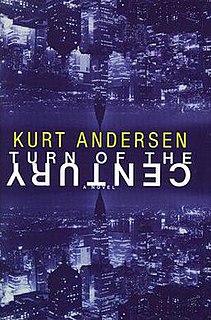Christian usually refers to:

Musical theatre is a form of theatrical performance that combines songs, spoken dialogue, acting and dance. The story and emotional content of a musical – humor, pathos, love, anger – are communicated through the words, music, movement and technical aspects of the entertainment as an integrated whole. Although musical theatre overlaps with other theatrical forms like opera and dance, it may be distinguished by the equal importance given to the music as compared with the dialogue, movement and other elements. Since the early 20th century, musical theatre stage works have generally been called, simply, musicals.

Thrace is a geographical and historical region in Southeast Europe, now split between Bulgaria, Greece and Turkey, which is bounded by the Balkan Mountains to the north, the Aegean Sea to the south and the Black Sea to the east. It comprises southeastern Bulgaria, northeastern Greece and the European part of Turkey.
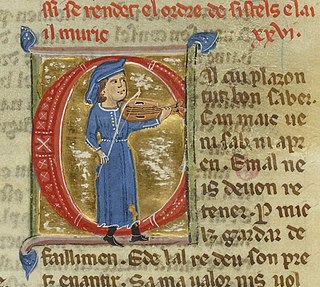
A troubadour was a composer and performer of Old Occitan lyric poetry during the High Middle Ages (1100–1350). Since the word troubadour is etymologically masculine, a female troubadour is usually called a trobairitz.
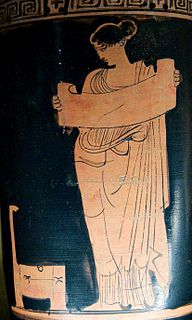
In ancient Greek religion and mythology, the Muses are the inspirational goddesses of literature, science, and the arts. They are considered the source of the knowledge embodied in the poetry, lyric songs, and myths that were related orally for centuries in these ancient cultures.
Latvian mythology is set of paganic beliefs of Latvian people reconstructed from written evidence and folklore materials.

In the music industry, a single is a type of release, typically a song recording of fewer tracks than an LP record or an album. This can be released for sale to the public in a variety of different formats. In most cases, a single is a song that is released separately from an album, although it usually also appears on an album. Typically, these are the songs from albums that are released separately for promotional uses such as digital download or commercial radio airplay and are expected to be the most popular. In other cases a recording released as a single may not appear on an album.
Gospel music is a genre of Christian music. The creation, performance, significance, and even the definition of gospel music varies according to culture and social context. Gospel music is composed and performed for many purposes, including aesthetic pleasure, religious or ceremonial purposes, and as an entertainment product for the marketplace. Gospel music usually has dominant vocals with Christian lyrics. Gospel music can be traced to the early 17th century, with roots in the black oral tradition. Hymns and sacred songs were often repeated in a call and response fashion. Most of the churches relied on hand clapping and foot stomping as rhythmic accompaniment. Most of the singing was done a cappella. The first published use of the term "gospel song" probably appeared in 1874. The original gospel songs were written and composed by authors such as George F. Root, Philip Bliss, Charles H. Gabriel, William Howard Doane, and Fanny Crosby. Gospel music publishing houses emerged. The advent of radio in the 1920s greatly increased the audience for gospel music. Following World War II, gospel music moved into major auditoriums, and gospel music concerts became quite elaborate.
A carol is in Modern English a festive song, generally religious but not necessarily connected with church worship, and often with a dance-like or popular character. The verb caroling also refers to the singing of carols.

A refrain is the line or lines that are repeated in music or in poetry; the "chorus" of a song. Poetic fixed forms that feature refrains include the villanelle, the virelay, and the sestina.
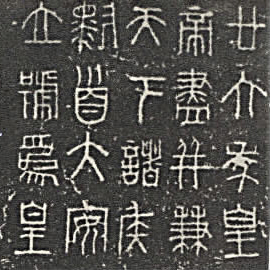
Seal script is an ancient style of writing Chinese characters that was common throughout the latter half of the 1st millennium BCE. It evolved organically out of the Zhou dynasty script. The Qin variant of seal script eventually became the standard, and was adopted as the formal script for all of China during the Qin dynasty. It was still widely used for decorative engraving and seals in the Han dynasty. The literal translation of the Chinese name for seal script, 篆書, is decorative engraving script, a name coined during the Han dynasty, which reflects the then-reduced role of the script for the writing of ceremonial inscriptions.
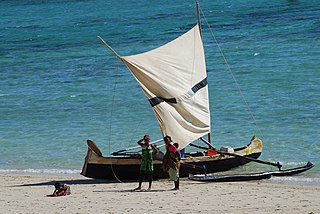
A pirogue, also called a piragua or piraga, is any of various small boats, particularly dugouts and native canoes. The word is French and is derived from Spanish piragua [piˈɾaɣwa], which comes from the Carib piraua.

Bylina or starina is a traditional East Slavic oral epic narrative poem. Byliny songs are loosely based on historical fact, greatly embellished with fantasy or hyperbole to create their songs. The word bylina is derived from the past tense of the verb “to be” and implies “something that was.” The term most likely originated with scholars of Russian folklore; in 1839, Ivan Sakharov, a Russian folklorist, published an anthology of Russian folklore, a section of which he titled “Byliny of the Russian People,” causing the popularization of the term. Later scholars believe that Sakharov misunderstood the word bylina in the opening of Igor’ Tale as “an ancient poem.” The folk singers of byliny called these songs stariny or starinki meaning “stories of old”.

Jetsun Milarepa was a Tibetan siddha, who famously was a murderer as a young man then turned to Buddhism to become an accomplished buddha despite his past. He is generally considered as one of Tibet's most famous yogis and poets, serving as an example for the Buddhist life. He was a student of Marpa Lotsawa, and a major figure in the history of the Kagyu school of Tibetan Buddhism.
New is an adjective referring to something recently made, discovered, or created.

"The Times They Are a-Changin'" is a song written by Bob Dylan and released as the title track of his 1964 album of the same name. Dylan wrote the song as a deliberate attempt to create an anthem of change for the time, influenced by Irish and Scottish ballads. Released as a 45-rpm single in Britain in 1965, it reached number 9 in the British top ten.
"Turn! Turn! Turn!", or "Turn! Turn! Turn! ", is a song written by Pete Seeger in the late 1950s. The lyrics – except for the title, which is repeated throughout the song, and the final two lines – are adapted word-for-word from the first eight verses of the third chapter of the biblical Book of Ecclesiastes. The song was originally released in 1962 as "To Everything There Is a Season" on folk group the Limeliters' album Folk Matinee, and then some months later on Seeger's own The Bitter and the Sweet.

The lied is a term in the German vernacular to describe setting poetry to classical music to create a piece of polyphonic music. The term is used for songs from the late fourteenth or early fifteenth centuries or even to refer to Minnesang from as early as the 12th and 13th centuries. It later came especially to refer to settings of Romantic poetry during the late eighteenth and nineteenth centuries, and into the early twentieth century. Examples include settings by Ludwig van Beethoven, Franz Schubert, Robert Schumann, Johannes Brahms, Hugo Wolf or Richard Strauss. Among English speakers, however, "lied" is often used interchangeably with "art song" to encompass works that the tradition has inspired in other languages. The poems that have been made into lieder often center on pastoral themes or themes of romantic love.

"New York Mining Disaster 1941" was released on Spin Records by the Bee Gees in 1967. It was their second EP and, like their first EP, was released only in Australia. All of the songs on this EP were originally released on their third LP Bee Gees' 1st.

